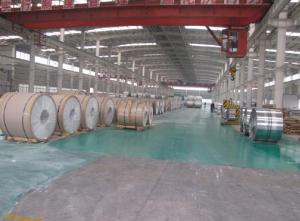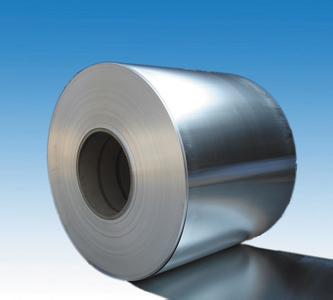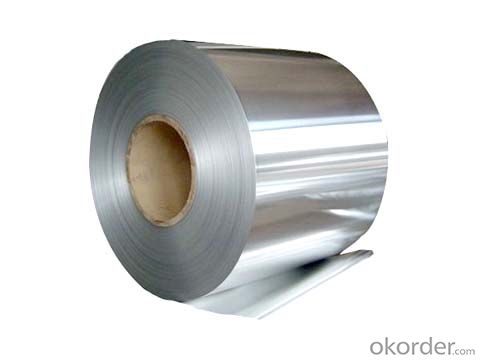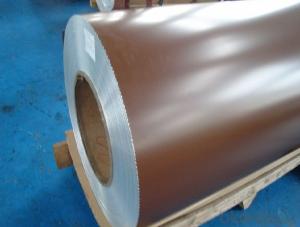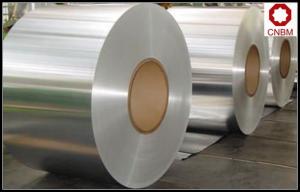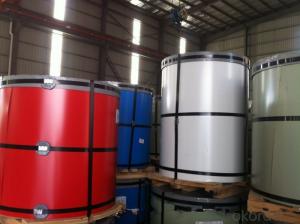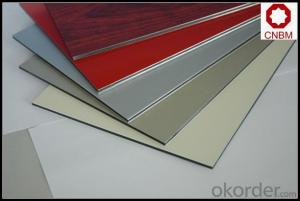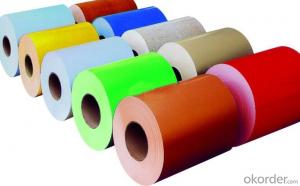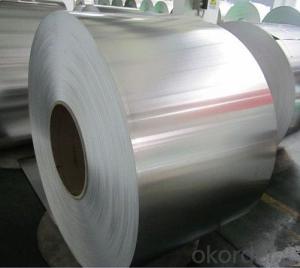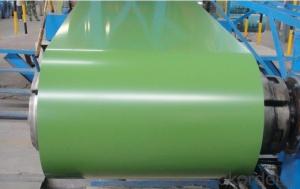China Pe Coated Aluminum Coil - Continuous Casting Aluminum Coils for Color Coating
- Loading Port:
- Shanghai
- Payment Terms:
- TT or LC
- Min Order Qty:
- 5 m.t.
- Supply Capability:
- 5000 m.t./month
OKorder Service Pledge
OKorder Financial Service
You Might Also Like
1.Structure of Continuous Casting Aluminium Coils for Color Coating
DC Aluminium Strip in Coil is one semi-finished aluminium material. This strip can be rolled down to aluminium coil,sheet,circle ect. The alloy AA1050 is widly used in building, industry ect. Its weight is much lower than steel. So many customers choosed aluminium material instead of steel.
2. Main features of Continuous Casting Aluminium Coils for Color Coating
a.Competitive price---We have our own mills and can produce mill finished aluminium coils, so we can control the production cost better.
b.Professional after-sale service---We have more than 15 years exportation experience and you need not worry about the exporation problems.
c.Fast delivery time---We can control the delivery time within 35 days.
3.Image
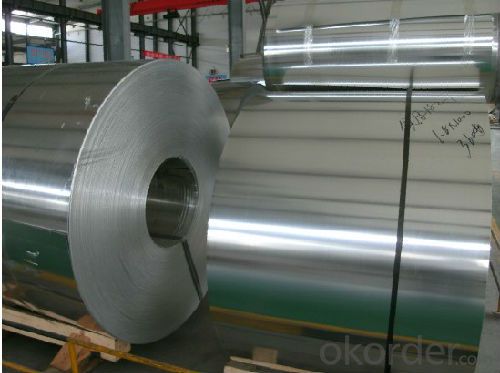
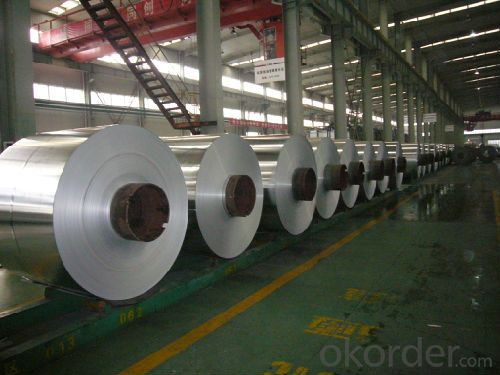
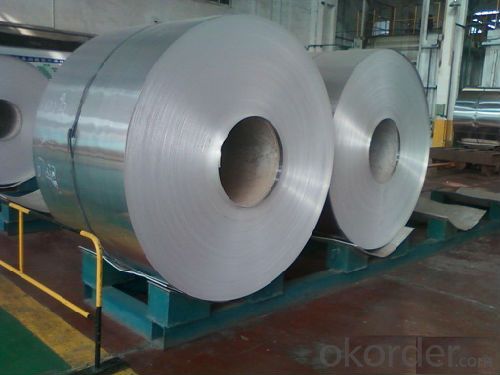
4. Product Specification
| Alloy | Temper | Thickness | Painting | Weight |
| AA1050 | H14 | 0.2MM-3MM | Polyester | 2 tons |
.
5.FAQ:
What is the quality standard?
---Usually our standard is GB3880-2006
What is the largest width?
---It is 2300mm
What is the MOQ?
---Usually we can accept 80 tons.
- Q: What are the potential applications of coil-anodized aluminum coils?
- Coil-anodized aluminum coils possess unique properties and advantages, allowing them to be employed in a wide range of potential applications. Here are some of the primary areas where they can be utilized: 1. Architectural: The distinct properties of coil-anodized aluminum make it well-suited for architectural purposes, including cladding, roofing, and facades. With its anodized coating, it offers increased durability, resistance to weather conditions, and color stability, making it suitable for outdoor use in various climates. Furthermore, the coils can be shaped and formed to create different architectural elements, providing design flexibility. 2. Transportation: Due to its lightweight nature, coil-anodized aluminum is ideal for transportation applications. It can be employed in the manufacturing of parts and components for the automotive, aerospace, and marine industries. The anodized coating enhances its corrosion resistance, making it suitable for exterior components and structures. 3. Electronics: Coil-anodized aluminum coils find utility in the field of electronics manufacturing. The anodized coating provides excellent electrical insulation, which is crucial in applications necessitating high conductivity and insulation. It can be utilized in the production of components such as heat sinks, casings, and connectors. 4. Signage and displays: The vibrant and long-lasting colors achieved through coil-anodizing make it a perfect material for signage and displays. The anodized coating ensures color stability against UV radiation and harsh weather conditions, rendering it suitable for both indoor and outdoor applications. It enables the creation of eye-catching and durable signage and displays. 5. Furniture and interior design: Coil-anodized aluminum coils can be employed in the manufacture of furniture and interior design elements. The anodized coating provides a smooth, durable, and scratch-resistant surface, making it suitable for applications like tables, chairs, wall panels, and decorative elements. The wide range of available colors and finishes allows for versatile design possibilities. 6. Industrial applications: Coil-anodized aluminum coils can be utilized in diverse industrial sectors. The anodized coating offers enhanced corrosion resistance, which is advantageous in industries such as chemical processing, food processing, and pharmaceuticals. It can be used in the production of tanks, containers, and equipment that require resistance against harsh chemicals and environments. 7. Energy and sustainable applications: The lightweight nature and durability of coil-anodized aluminum make it suitable for energy and sustainable applications. It can be employed in the manufacturing of solar panels, heat exchangers, and other energy-related components. The anodized coating provides protection against weathering and corrosion, ensuring long-term performance. In conclusion, coil-anodized aluminum coils have extensive and diverse potential applications, spanning across architectural, transportation, electronics, signage, furniture, industrial, and energy sectors. The combination of its lightweight nature, durability, color stability, and corrosion resistance makes it a versatile material for various industries and applications.
- Q: Are there any limitations on the bending or shaping of aluminum coils?
- Yes, there are limitations on the bending or shaping of aluminum coils. Aluminum has a certain level of elasticity and ductility, which allows it to be bent or shaped to a certain extent. However, excessive bending or shaping can lead to cracking, deformation, or even breakage of the aluminum coils. Additionally, the thickness and temper of the aluminum coils can also affect their ability to be bent or shaped. Therefore, it is important to consider these limitations when working with aluminum coils to ensure their structural integrity is maintained.
- Q: Why do the layers loose when taking out coil after roll of aluminum 0.14?
- After rolling, the most possible reason may be poor deoiling effect. I think, for 0.14mm aluminum coil, the lining sleeve will not be forgotten. After rolling , oil ooze from aluminum layers, and the support of aluminum coil is not enough, leading to coil collapsing. The specific manifestations are that the edges of even round aluminum layers become like water ripple, and that the aluminum coils suddenly become uneven when taking out coil.
- Q: How are aluminum coils tested for surface adhesion?
- To ensure the quality and performance of aluminum coils, various methods are employed to test their surface adhesion. Among these methods is the tape test, where a piece of adhesive tape is firmly applied to the coil's surface and swiftly removed. The amount of coating or paint that comes off with the tape is then evaluated to gauge the adhesion. If excessive coating is removed, it indicates poor surface adhesion. Another approach involves the use of a cross-cut or knife test, whereby a grid pattern is carved into the coil's surface using a sharp blade. The grid is subsequently covered with adhesive tape and swiftly removed. The adhesion is assessed by examining the extent to which the coating or paint is removed from the cut lines. If there is minimal or no removal of the coating, it suggests good surface adhesion. Moreover, the pull-off adhesion test is frequently conducted using specialized equipment. This test entails affixing a device to the coil's surface and applying gradually increasing force until the coating or paint begins to detach. The force required to cause detachment is measured, providing a quantitative measure of the surface adhesion strength. In summary, these testing methods play a crucial role in enabling manufacturers to evaluate the surface adhesion of aluminum coils and ensure compliance with the necessary standards in various industries, such as automotive, aerospace, and construction.
- Q: Hi,I am fairly new to design and have been doing technical drawing for only a few months. We have an item, that supports up to about 800KG of weight, as a C shaped channel. We are currently making this out of 3mm Mild Steel. Due to a new design, we are changing this design to avoid welding and painting the above part. This means we will be making the part from Galv sheet.I would like to make the part from Aluminium because 1) There will be no rust, 2) I think it will look better than Galv sheet but I need to keep the cost down.We use 3mm mild at the moment, because it is easier to weld than 2mm, not for strength really.Therefore, my question is, in everybody's opinion, would it be OK to make it from 2mm Aluminium, or is this likly to end in disaster?FYI, the part is 1600mm long, then on each long side there are presses of up 250mm, down 80mm and down 20mm. The weight is supported at 4 points on the 80mm flanges.What a question for my first go Answers! TIA
- Aluminum is not as strong as steel, so you would need a thicker piece. Also you need to select the aluminum alloy to match the application, there are many different alloys. And Al is more expensive than steel, so you have to look at your cost budget. Galvanized will not rust, so your only reason is looks? Not a decision for you to make, but for the customer.
- Q: Is it possible to utilize an electric iron that features an aluminum coil heater?
- <p>Yes, you can use an electric iron with an aluminum coil heater. Aluminum coil heaters are commonly used in electric irons due to their excellent heat conductivity and quick heat-up time. They distribute heat evenly and maintain a consistent temperature, making them ideal for ironing. However, it's important to follow the manufacturer's guidelines for use and maintenance to ensure safety and longevity of the iron.</p>
- Q: Are aluminum coils susceptible to warping or bending?
- Aluminum coils are prone to warping or bending due to their susceptibility. Despite being lightweight and highly resistant to corrosion, aluminum is relatively soft when compared to materials such as steel. Consequently, it is more likely to bend or warp under specific circumstances. Contributing factors include excessive heat, heavy loads, or mishandling, which can result in deformation of the aluminum coils. To avoid any damage or distortion, it is crucial to handle and store the coils with caution. Furthermore, employing appropriate installation techniques and maintenance practices can effectively reduce the risk of warping or bending.
- Q: 11 g of aluminum at 200 C and 19 g of copper are dropped into 55 cm^3 of ethyl alcohol at 15 C. The temperature quickly comes to 24 C. What was the initial temperature of the copper? (answer in C) Express your answer using two significant figures.
- Quantity of heat given by aluminium = mc θ = 0.011* 913*(200 - 24) = 1767.6 J. . Quantity of heat given by copper = mc θ = 0.019* 385*(T - 24) = 7.315 T -175.56 J. . Mass of ethyl alcohol = volume * density = 0.000055 m^3 *789 = 0.043395 kg. Quantity of heat gained by ethyl = mc θ = 0.043395 * 2500*(24 - 15) = 976.3875 J heat lost.= Heat gained 1767.6 + 7.315 T -175.56 = 976.39 7.315 T = -615.65 T = -84.17 ?C This shows that copper also gains heat. ======================================...
- Q: This question asks for criteria or methods to determine if a used aluminum coil is safe for reuse.
- <p>To determine if a used aluminum coil is safe to use, consider the following: Check for any visible signs of damage such as cracks, dents, or corrosion. Ensure the coil has been properly cleaned and sanitized to remove any residues or contaminants. Verify that the coil has not exceeded its recommended lifespan or usage limits. Consult the manufacturer's guidelines for any specific safety checks or maintenance requirements. If in doubt, it's best to consult with a professional or replace the coil to avoid potential safety hazards.</p>
- Q: Are aluminum coils suitable for architectural applications?
- Aluminum coils are indeed suitable for architectural purposes. The construction industry often relies on aluminum, a highly adaptable and long-lasting material, for a variety of architectural projects. The use of aluminum coils offers numerous benefits in this field, including their light weight, resistance to corrosion, and ease of shaping into desired forms and sizes. These coils find application in roofing, cladding, facades, gutters, and more architectural areas. Moreover, architects and designers have the option to coat aluminum coils with different finishes, providing a wide array of aesthetic possibilities. In conclusion, choosing aluminum coils for architectural projects is an excellent decision due to their robustness, endurance, and flexibility.
Send your message to us
China Pe Coated Aluminum Coil - Continuous Casting Aluminum Coils for Color Coating
- Loading Port:
- Shanghai
- Payment Terms:
- TT or LC
- Min Order Qty:
- 5 m.t.
- Supply Capability:
- 5000 m.t./month
OKorder Service Pledge
OKorder Financial Service
Similar products
Hot products
Hot Searches
Related keywords
